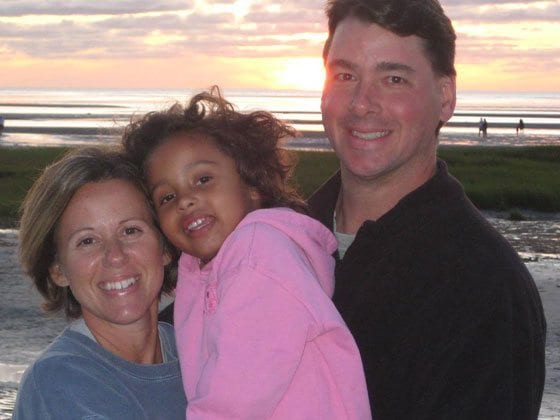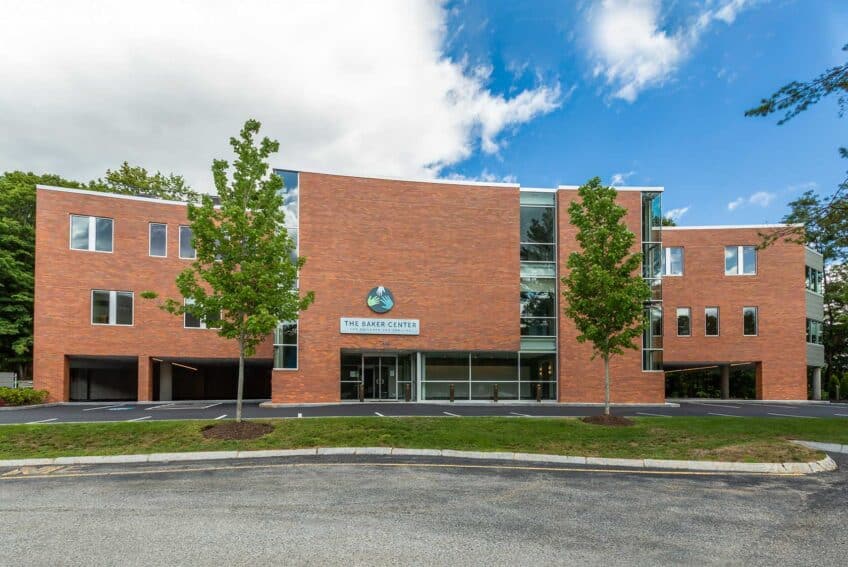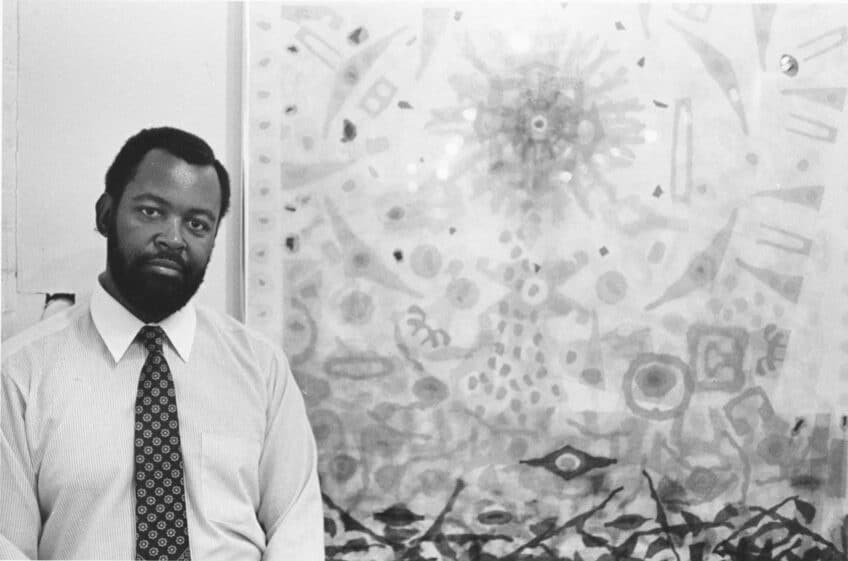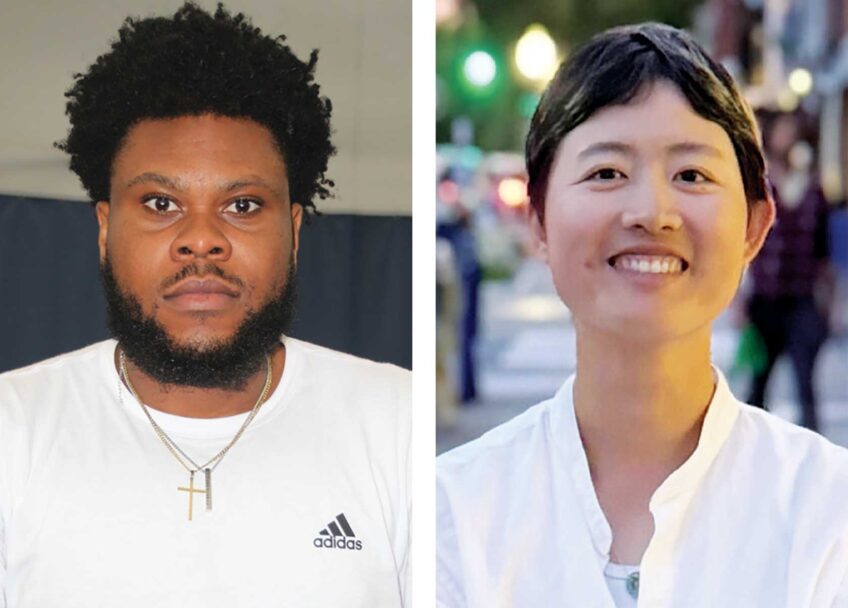

Author: Lisa KesslerDebi and Craig Miller and their daughter Mackenzie enjoy a family moment. Transracial adoptions are on the rise throughout the state and the Millers are just one of countless multi-racial families throughout the nation.
When Lynn and Kevin Riley brought home their son Jack from the hospital, Mrs. Riley distributed a letter to family, neighbors and friends to “invite open conversation.”
With respect to Jack, she wrote, “No question is a wrong question. If I can’t answer, I’ll be honest and know you will understand. Please ask the question, rather than have this be a taboo question.”
This was, perhaps, not the typical birth announcement. But this was also not the typical story of bringing home a baby.
The Rileys, who had already had two biological children, Madison and Emily, adopted Jack in 2003 through the Massachusetts state agency now known as the Department of Children and Families (DCF). The Rileys, who are white, were bringing Jack, who is African American, to their home in Millis, a community that Mrs. Riley describes as “not very diverse.”
The open letter, Mrs. Riley explained, “was more out of wanting to protect our own family.” So far, Riley says, she has yet to encounter anyone who has not been supportive of their decision.
That wasn’t always the case with transracial adoptions. Fifteen years ago, the issue reached a head. At the heart of the debate was the fact that the foster care system had a disproportionately high number of black children. On average black children languished in foster care nine months longer than white children before moving to permanent homes.
After intense debate, the Multiethnic Placement Act (MEPA) passed both the Houses and the Senate, and later signed into law by President Bill Clinton. The law prohibits an adoption agency that receives federal funding from discriminating on the basis of race, color or nationality in placing a child in an adoptive or foster family.
One part of the law directed state agencies to recruit more adoptive parents of the same race as the children. The more contentious part of the legislation prohibited race from being taken into consideration in most decisions about adoption from foster care. For example, white parents seeking to adopt a black child cannot be required to undergo race-oriented training that differs in any way from training that all prospective adoptive parents receive.
But critics argued that a color-blind family was not necessarily a good thing in transracial adoptions, largely because that approach had the potential to diminish a healthy sense of racial identity. That debate rages on, as does the number of transracial adoptions over the years.
The U.S. Census Bureau has only collected information about adoption since 2000. There were 1.5 million adoptions that year. Of those, 270,000 indicated the adopted child was of a different race than the “householder.”
The latest federal figures showed 32 percent of the 510,000 children in foster care were black in 2006. Of the black children adopted out of foster care, about 20 percent are adopted by white families.
The census also indicated that non-white families rarely adopted children of a different race, whereas 13 percent of white adoptive families had adopted a child of a different race.
Alison Goodwin, director of public affairs for the Department of Children and Families (DCF) said the state’s foster care system is seeing a more diverse mix of families than in the past.
“We have a number of biracial families,” she explained. “We also have a number of gay and lesbian families. There really is no white family, black family — that doesn’t exist any longer.”
Based on her observation, Goodwin said there is an increased openness on the part of adoptive parents in Massachusetts to adopt children of races different from their own.
As it is now, the Massachusetts Adoption Resource Exchange (MARE) reports there are more than 2,400 children in the state’s foster care system awaiting adoption. About half are children of color. The organization assisted in the placement of 160 children in 2008, up from 143 in 2007.
A slow process
Adoptions through foster care hinge on whether a child has been signed over by his birth parents or by the state as legally free to adopt. This process may take years.
When the Rileys brought home Jack, they were still in the “preadoptive” phase. Visits with the birth parent(s) are usually still required during this time. After nine months, the Rileys’ adoption of Jack was official.
It was a long journey from the days when Mrs. Riley had worked for the agency after graduating from college. When she met her husband, they discussed having a family someday and agreed that regardless of their ability to have biological children, they would try at some point to adopt through DCF.
Fortunately, more resources are now available for those seeking to adopt through private agencies, especially those hoping to adopt hard-to-place children in Massachusetts.
Betsy Hochberg, who directs Adoption Resources under the Jewish Family and Children’s Services in Boston, describes the hard-to-place population as “healthy, partially or fully African American newborns or children whose mothers may have had some health issues.”
As part of her directorship, Hochberg oversees the Lindelil Fund. The fund was founded by a group of adoptive families who were committed to finding homes for hard-to-place children, providing subsidies of up to $25,000 to families who qualify. Hochberg works with churches and other organizations to recruit families and educate them about the needs of their adopted children.
“It is really important for adoption agencies to educate families if it’s a transracial adoption — in most cases, it’s white families adopting a black child — on the issues involved,” said Hochberg. “Families need to understand that they have not just adopted a black child, but that they have [become] a multiracial family, and that they need to embrace that.”
Hochberg said inquiries to the Fund have risen slightly over the last two years, contrasting with other private agencies in Boston who reported dips in inquiries during the recession.
The rising interest also may reflect a changing attitude toward multiracial families, she said.
“I think seeing a black family in the White House has changed people’s attitudes,” Hochberg said. “We as Americans see ourselves differently. We really are a diverse country. ”
Although Hochberg said she believes it is easier today to raise children in mixed-race homes, she said, the “all you need is love” adage is not enough.
Hochberg said one of the topics addressed in the home study — a comprehensive inspection conducted prior to a child’s placement in an adoptive home — is: “Look at your church, your synagogue, your community,” said Hochberg. “If your adopted children don’t see around the dining room table people that look like them, you have to ask, ‘Where can they meet those people?’ As families continue to do that, we all benefit.”
Feeling at home
Jack, who is now six years old, is “loving kindergarten” according to Riley, as well as being a big brother.
The Rileys welcomed another son home — who could not be named because of preadoptive statutes — in June 2009. This son, who is now 2 years-old, is also African American.
Prior to their second adoption, Lynn said she and Kevin, “did a lot of thinking.” Parents who adopt through DCF can list their preferences of a child’s race, sex, or level of physical or mental disability. The Rileys were specific in saying they wanted an African American child. “We felt that if we were going to [adopt again], it made sense for Jack,” said Lynn.
Since bringing home their second son, the Rileys have had many conversations with Jack whose skin is lighter than his brother’s. “We’ve been helping him to get why it’s like that,” she said. “It’s not odd, it’s genetic, nobody can do anything about that.”
In their community, the Rileys are committed to providing Jack with as many resources as possible to understand his identity.
To better help Jack work through the questions, Riley helped to organize a playgroup for other families in Boston’s western suburbs that had also adopted children of color.
The group, Rainbow Connection, began in 2003 and has met monthly at the homes of the adoptive families. Some of the children who were the original “charter members” are now school-aged, but the group has grown to include about six families who, on a recent morning, met at an adoptive family’s home in Holliston.
The children headed to the basement to share snacks and toy trains, while their parents shared stories of being stopped in grocery stores by strangers who had told them their adopted sons and daughters looked like they did.
Riley, who had brought Jack to playgroup on this day, reflected, “People sometimes say to me, ‘Oh, look at the great thing you have done in adopting.’ But I tell them, ‘You have no idea what Jack has given us. He has brought this gift to the people in our lives who would never have done that soul-searching, who would never been able to see through new glasses about race.’”
Material from the Associated Press contributed to this report.






